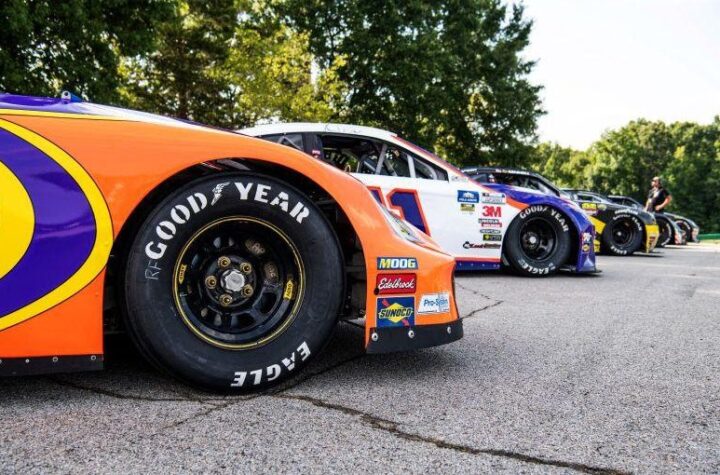

When San Diego-based Fallbrook Technologies Inc. launched its NuVinci® DeltaSeries™ line of continuously variable planetary or CVP transmissions, it signaled a broader entry into the transportation industry. The company is already known for the use of its NuVinci CVP technology in bicycle transmissions. NuVinci technology, however, can be used to improve the performance and flexibility of transmissions for powered vehicles and equipment, and the NuVinci DeltaSeries products are the first of their kind to increase fuel efficiency and vehicle performance with the same system.
“All too often, automotive engineers must choose between one or the other in designing accessories,” says William G. Klehm III, Fallbrook’s chairman and CEO. “Economy compromises performance. Performance compromises economy but our NuVinci DeltaSeries line is making this ‘give and take’ scenario a thing of the past. That’s because the NuVinci technology’s combination of compact, flexible packaging, and predictable, stable control characteristics enable it to be used in applications where neither other CVTs or conventional multi-speed transmissions were previously practical.”
The NuVinci CVP uses a set of rotating and tilting balls positioned between the input and output components of a transmission. Tilting the balls changes their contact diameters and varies the speed ratio. According to Fallbrook, the NuVinci platform offers companies the flexibility to design and produce next-generation products that are better tailored to their unique business, market and competitive requirements.
Recent tests have shown that Fallbrook’s NuVinci DeltaSeries CVP coupled with a 210 cc air conditioning compressor, replaced a 330cc unit inside a Chengdu Ltd bus, resulting in annual fuel savings of up to US$1,500.
“Our product line enables vehicle accessories to run more efficiently by continuously optimizing their speed, regardless of what the engine is doing,” said Rob Smithson, CTO and vice president of Fallbrook. “Historically, these belt-driven accessories have been connected directly to the engine, so their speeds are tied to engine RPM. They have to be sized to meet worst case load conditions at low engine speeds, such as idle, which results in more parasitic losses than necessary and wasted energy at high engine speeds because of excess capacity. The NuVinci DeltaSeries accessory drive does away with this issue.”
To obtain more in-depth information about the NuVinci DeltaSeries, Automotive Industries interviewed William G. Klehm: III, chairman of the board, president and CEO of Fallbrook Technologies Inc and asked him what makes the NuVinci® DeltaSeries™ unique compared to other CVPs?
Klehm: The NuVinci CVP offers a wide range of advantages over conventional transmissions. These advantages include lower manufacturing costs, stable and predictable control characteristics, compact, flexible packaging options, and the ability to accept multiple inputs while varying speed and torque.
AI: Can you offer some specific examples of how the NuVinci DeltaSeries product lines will add value?
Klehm: The NuVinci DeltaSeries enables automotive accessories to operate at their optimum speed regardless of engine speeds for increased performance and fuel savings. So for instance, an air conditioning compressor can cool the car better on a hot day while stuck in traffic by running faster at low engine speeds, and the same compressor can be slowed down when less cooling is needed at higher engine speeds for improved fuel economy. Similarly, an alternator can achieve rated output power with the engine at idle. An engine crankshaft-mounted NuVinci CVP has the ability to change accessory loads and outputs instantaneously, providing accessory performance or economy on demand. Doing so optimizes accessory performance, improves fuel economy and allows for the right-sizing of components to reduce packaging and improve performance.
AI: CVTs have been around for a long time. Why have they not become commonplace?
Klehm: The use of CVTs did not become widespread due to multiple problems including scalability challenges, questionable reliability and durability, high cost, weight, ungainly packaging, and other factors. Despite some obvious drawbacks, some manufacturers such as Ford, Nissan, Honda and Audi have implemented limited production with prior CVT technology because the market need was so great. However, with the development of the NuVinci CVP, enough of the technical roadblocks have been eliminated to clear the way for a wide range of CVP applications for which markets are ready and waiting.
AI: Are there any design changes that automotive manufacturers must undertake to employ the NuVinci DeltaSeries line?
Klehm: Very little if any. The product’s highly flexible packaging (in-line or concentric input/output shafts) enables use of existing accessory beltlines in most cases, without the need for a dual-belt system. And their stable, predictable shift characteristics ease implementation of simple, yet innovative control, making the presence of the CVP completely transparent to the end customer.
AI: What materials are used to manufacturer a NuVinci CVP?
Klehm: Nothing unusual. No rare Earth elements are used to manufacture the NuVinci CVP. It is a compact, durable and low-cost offering using readily available materials.
AI: Why is the technology named NuVinci?
Klehm: The name represents a “tip of the hat” to Leonardo da Vinci who, over 500 years ago, sketched what is considered to be the first concept of a continuously variable transmission.











More Stories
What You Should Know Before Filing a Car Accident Claim
Injured in a Car Accident in St. Louis? Here’s What to Do Next
Historic Sportscar Racing (HSR) and Goodyear Announce Multi-Year Partnership